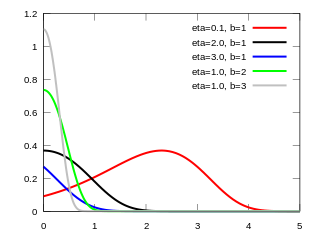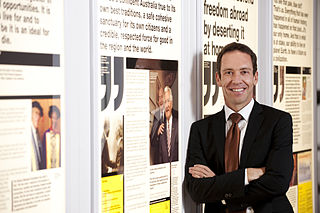Related Research Articles

Marketing is the process of exploring, creating, and delivering value to meet the needs of a target market in terms of goods and services; potentially including selection of a target audience; selection of certain attributes or themes to emphasize in advertising; operation of advertising campaigns; attendance at trade shows and public events; design of products and packaging attractive to buyers; defining the terms of sale, such as price, discounts, warranty, and return policy; product placement in media or with people believed to influence the buying habits of others; agreements with retailers, wholesale distributors, or resellers; and attempts to create awareness of, loyalty to, and positive feelings about a brand. Marketing is typically done by the seller, typically a retailer or manufacturer. Sometimes tasks are contracted to a dedicated marketing firm or advertising agency. More rarely, a trade association or government agency advertises on behalf of an entire industry or locality, often a specific type of food, food from a specific area, or a city or region as a tourism destination.
Marketing research is the systematic gathering, recording, and analysis of qualitative and quantitative data about issues relating to marketing products and services. The goal is to identify and assess how changing elements of the marketing mix impacts customer behavior.
In marketing, market segmentation is the process of dividing a broad consumer or business market, normally consisting of existing and potential customers, into sub-groups of consumers based on shared characteristics.
Market research is an organized effort to gather information about target markets and customers: know about them, starting with who they are. It is an important component of business strategy and a major factor in maintaining competitiveness. Market research helps to identify and analyze the needs of the market, the market size and the competition. Its techniques encompass both qualitative techniques such as focus groups, in-depth interviews, and ethnography, as well as quantitative techniques such as customer surveys, and analysis of secondary data.

The École Supérieure des Sciences Economiques et Commerciales is a major French business and management school, with non-profit association status founded in 1907 and whose principal campus is located in Cergy. It also has locations in La Défense, Rabat and Singapore, which are used in particular for the ESSEC Global BBA and ESSEC Executive MBA programs.

Consumer behavior is the study of individuals, groups, or organizations and all the activities associated with the purchase, use and disposal of goods and services. Consumer behaviour consists of how the consumer's emotions, attitudes, and preferences affect buying behaviour. Consumer behaviour emerged in the 1940–1950s as a distinct sub-discipline of marketing, but has become an interdisciplinary social science that blends elements from psychology, sociology, social anthropology, anthropology, ethnography, ethnology, marketing, and economics.

Advertising management is a planned managerial process designed to oversee and control the various advertising activities involved in a program to communicate with a firm's target market and which is ultimately designed to influence the consumer's purchase decisions. Advertising is just one element in a company's promotional mix and as such, must be integrated with the overall marketing communications program. Advertising is, however, the most expensive of all the promotional elements and therefore must be managed with care and accountability. Advertising management process also helps in defining the outline of the media campaign and in deciding which type of advertising would be used before the launch of a product.

In marketing, brand loyalty describes a consumer's positive feelings towards a brand, and their dedication to purchasing the brand's products and/or services repeatedly, regardless of deficiencies, a competitor's actions, or changes in the environment. It can also be demonstrated with other behaviors such as positive word-of-mouth advocacy. Corporate brand loyalty is where an individual buys products from the same manufacturer repeatedly and without wavering, rather than from other suppliers. Loyalty implies dedication and should not be confused with habit, its less-than-emotional engagement and commitment. Businesses whose financial and ethical values rest in large part on their brand loyalty are said to use the loyalty business model.
Neuromarketing is a commercial marketing communication field that applies neuropsychology to market research, studying consumers' sensorimotor, cognitive, and affective responses to marketing stimuli. The potential benefits to marketers include more efficient and effective marketing campaigns and strategies, fewer product and campaign failures, and ultimately the manipulation of the real needs and wants of people to suit the needs and wants of marketing interests.
Frank M. Bass was an American academic in the field of marketing research and marketing science. He was the creator of the Bass diffusion model that describes the adoption of new products and technologies by first-time buyers. He died on December 1, 2006.

Andrew Ehrenberg was a statistician and marketing scientist. For over half a century, he made contributions to the methodology of data collection, analysis and presentation, and to understanding buyer behaviour and how advertising works.
Double jeopardy is an empirical law in marketing where, with few exceptions, the lower-market-share brands in a market have both far fewer buyers in a time period and also lower brand loyalty.
The following outline is provided as an overview of and topical guide to marketing:
Brand awareness is the extent to which customers are able to recall or recognize a brand under different conditions. Brand awareness is one of two dimensions from brand knowledge, an associative network memory model. Brand awareness is a key consideration in consumer behavior, advertising management, and brand management. The consumer's ability to recognize or recall a brand is central to purchasing decision-making. Purchasing cannot proceed unless a consumer is first aware of a product category and a brand within that category. Awareness does not necessarily mean that the consumer must be able to recall a specific brand name, but they must be able to recall enough distinguishing features for purchasing to proceed. Creating brand awareness is the main step in advertising a new product or bringing back the older brand in light.
Gerald Zaltman is the Joseph C. Wilson Professor Emeritus at Harvard Business School and the author and editor of 20 books, most recently How Customers Think (2003) and Marketing Metaphoria (2008). In 1997 he founded the market research consulting firm Olson Zaltman Associates in partnership with Jerry C. Olson, Professor of Marketing Emeritus, Smeal College of Business at Penn State. Zaltman patented, the Zaltman Metaphor Elicitation Technique, a method used to delve into the unconscious thinking that drives behavior.

In probability and statistics, the Gompertz distribution is a continuous probability distribution, named after Benjamin Gompertz. The Gompertz distribution is often applied to describe the distribution of adult lifespans by demographers and actuaries. Related fields of science such as biology and gerontology also considered the Gompertz distribution for the analysis of survival. More recently, computer scientists have also started to model the failure rates of computer code by the Gompertz distribution. In Marketing Science, it has been used as an individual-level simulation for customer lifetime value modeling. In network theory, particularly the Erdős–Rényi model, the walk length of a random self-avoiding walk (SAW) is distributed according to the Gompertz distribution.

Byron Sharp is a Professor of Marketing Science at the University of South Australia, known for his work on loyalty programs.
Word-of-mouth marketing differs from naturally occurring word of mouth, in that it is actively influenced or encouraged by organizations. While it is difficult to truly control WOM, research has shown that there are three generic avenues to 'manage' WOM for the purpose of WOMM:

In probability and statistics, the Gamma/Gompertz distribution is a continuous probability distribution. It has been used as an aggregate-level model of customer lifetime and a model of mortality risks.
The Buy Till You Die (BTYD) class of statistical models are designed to capture the behavioral characteristics of non-contractual customers, or when the company is not able to directly observe when a customer stops being a customer of a brand. The goal is typically to model and forecast customer lifetime value.
References
- ↑ "OBITUARY: GERALD GOODHARDT". Research live. Retrieved 1 January 2021.
- ↑ Goodhardt, Gerald J., Andrew S.C. Ehrenberg, and Christopher Chatfield (1984), "The Dirichlet: A Comprehensive Model of Buying Behaviour," Journal of the Royal Statistical Society, 147 (part 5), 621-55.
- ↑ Ehrenberg, Andrew S.C., Mark D. Uncles, and Gerald G. Goodhardt (2004), "Understanding Brand Performance Measures: Using Dirichlet Benchmarks," Journal of Business Research, 57 (12), 1307-25.
- ↑ Sharp, Byron, Malcolm Wright, and Gerald Goodhardt (2002), "Purchase loyalty is polarised into either repertoire or subscription patterns," Australasian Marketing Journal, 10 (3), 7.
- ↑ Bemmaor, A. C.(1981a) "Stochastic Modeling of Consumer Purchase Behavior: I. Analytical Results", Working paper No. 81006, ESSEC Business School, Cergy-Pontoise, France.
- ↑ Bemmaor, A. C.(1981b) "Stochastic Modeling of Consumer Purchase Behavior: II. Applications", Working paper No. 81007, ESSEC Business School, Cergy-Pontoise, France.
- ↑ Schmittlein, D. C., A. C. Bemmaor and D. G. Morrison (1985) "Why Does the NBD Model Work? Robustness in Representing Product Purchases, Brand Purchases and Imperfectly Recorded Purchases," Marketing Science, Vol. 4, No. 3, 255-266.